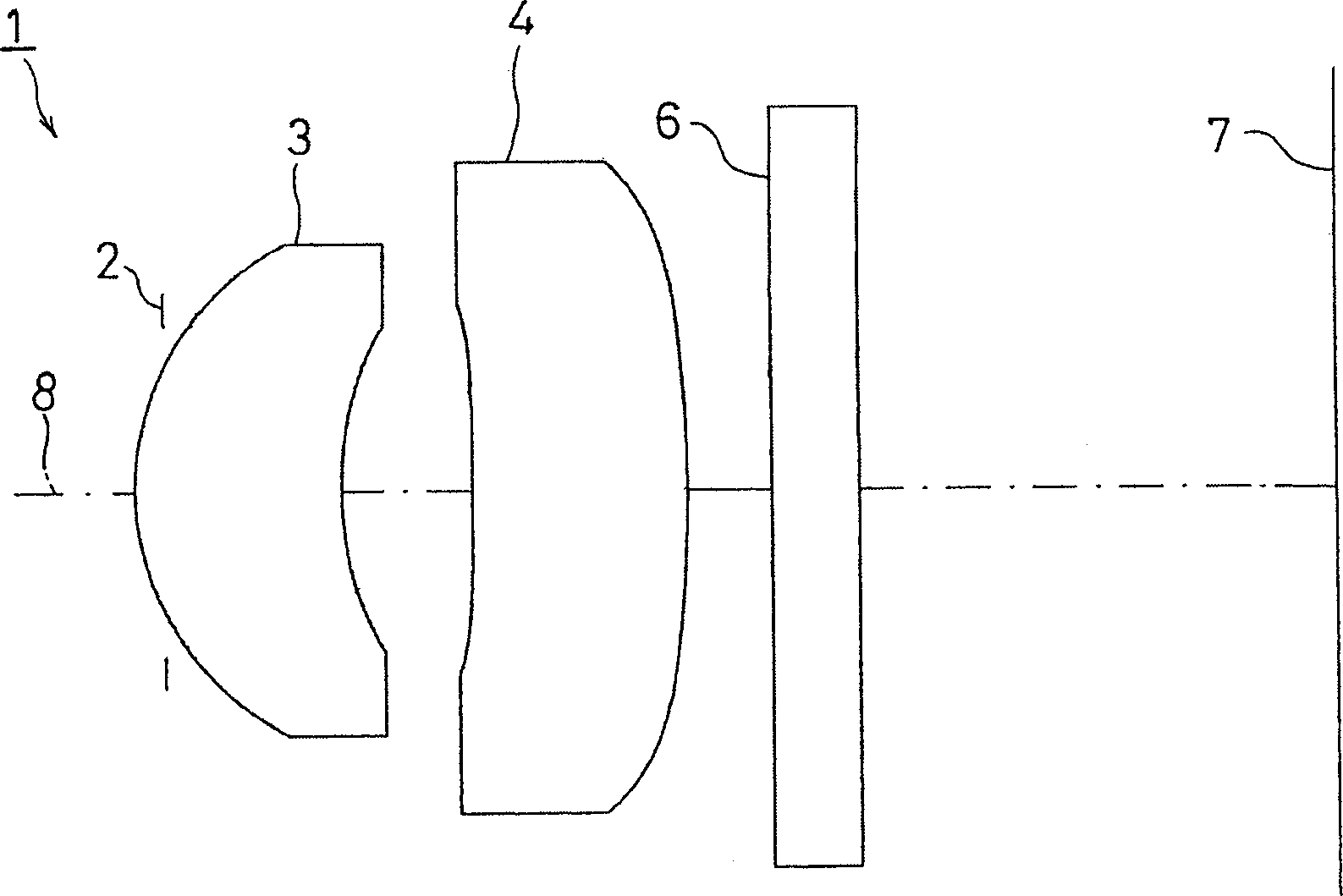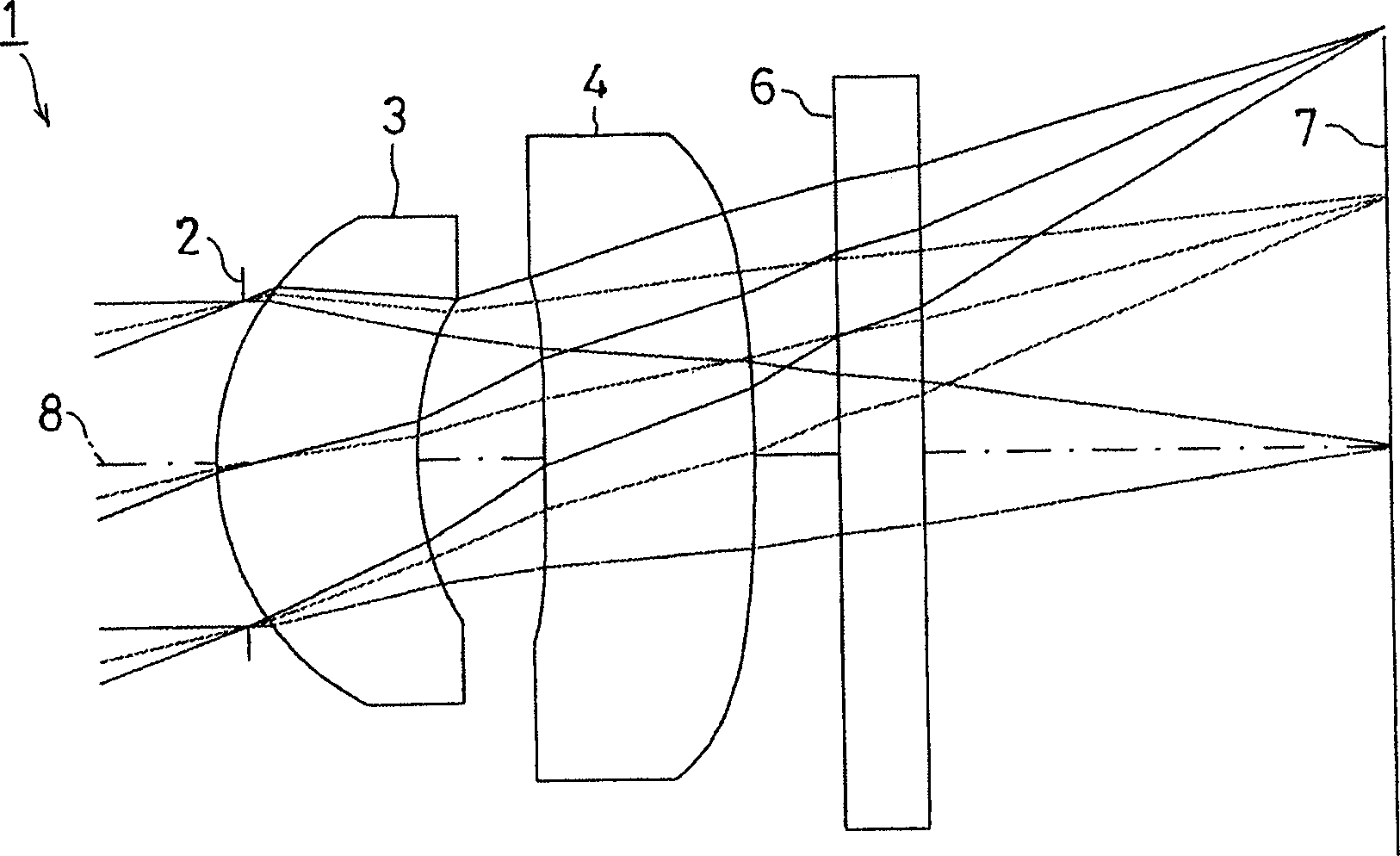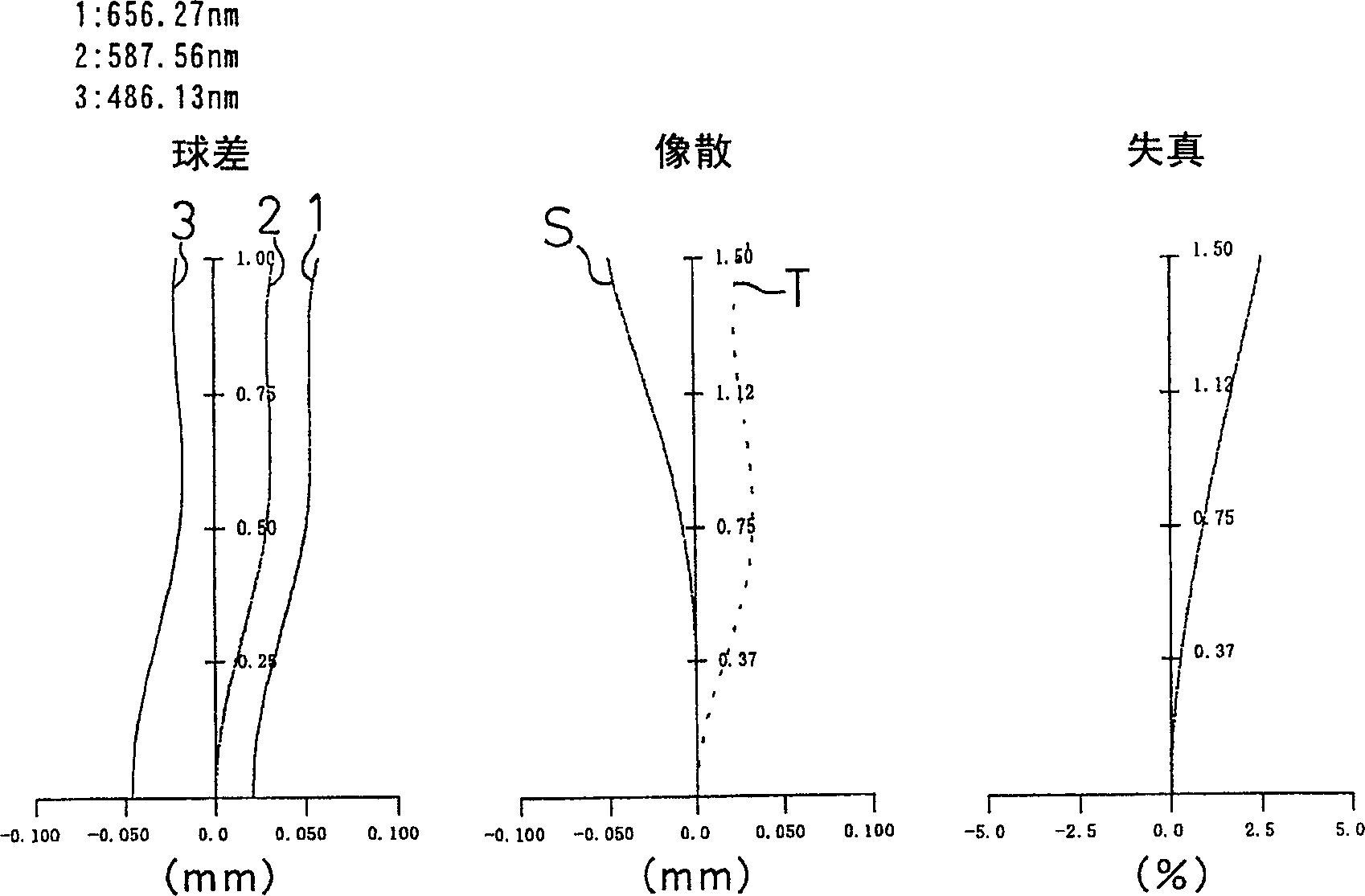Imaging lens system
A technology of camera lens and camera surface, applied in the field of camera lens, can solve the problems of difficulty in achieving small size and light weight, increased manufacturing cost, and large number of parts, and achieves the effect of achieving small size and light weight, good manufacturing performance and effective volume
- Summary
- Abstract
- Description
- Claims
- Application Information
AI Technical Summary
Problems solved by technology
Method used
Image
Examples
Embodiment
[0150] Below, refer to Figure 2-Figure 9 Embodiments of the present invention will be described.
[0151] Here, in this embodiment, Fno represents the F component, and r represents the radius of curvature of the optical surface (in the case of a lens, the radius of curvature of the center). And d represents the distance to the next optical plane. Also, nd represents the refractive index of each optical system when irradiated with d-line (yellow), and vd represents the Abbe number of each optical system when the same d-line is applied.
[0152] k, A, B, C, and D represent coefficients in the following formula (12). That is, when the direction of the optical axis 8 is the Z axis, the direction perpendicular to the optical axis 8 is the X axis, the propagation direction of light is positive, k is the cone coefficient, A, B, C, D are the aspheric coefficients, and r is The aspherical shape of the lens is expressed by the following formula when the curvature radius is used.
...
no. 1 example
[0155] figure 2 Represents the first embodiment of the present invention, in this embodiment, with figure 1 The imaging lens 1 of the shown structure is also configured with a diaphragm 2 on the object side of the first surface of the first lens 3, and a cover as an optical filter 6 is arranged between the second surface of the second lens 4 and the imaging surface 7. Glass. In addition, the first surface of the first lens 3 is located closer to the object side than the aperture 2 through the aperture 2 .
[0156] The imaging lens 1 of the first embodiment is set under the following conditions.
[0157] lens data
[0158] face number
r
d
nd
vd
1 (first lens first side)
2 (the second side of the first lens)
3 (first side of the second lens)
4 (Second lens second side)
5 (covering the first side of the glass)
6 (covering the second side of the glass)
1.033
1.387
-39.796
-6.02...
no. 2 example
[0164] Figure 4 represents a second embodiment of the present invention, in this embodiment, with figure 1 The imaging lens 1 having the structure shown is similarly provided with a diaphragm 2 disposed on the object side of the first surface of the first lens 3, and an optical filter 6 is disposed between the second surface of the second lens 4 and the imaging surface 7. Cover glass. In addition, the first surface of the first lens 3 is located closer to the object side than the aperture 2 through the aperture 2 .
[0165] The imaging lens 1 of this second embodiment is set under the following conditions.
[0166] lens data
[0167] face number
r
d
nd
vd
1 (first lens first side)
2 (the second side of the first lens)
3 (first side of the second lens)
4 (Second lens second side)
5 (covering the first side of the glass)
6 (covering the second side of the glass)
1.115
1.478
217.3...
PUM
 Login to View More
Login to View More Abstract
Description
Claims
Application Information
 Login to View More
Login to View More - R&D
- Intellectual Property
- Life Sciences
- Materials
- Tech Scout
- Unparalleled Data Quality
- Higher Quality Content
- 60% Fewer Hallucinations
Browse by: Latest US Patents, China's latest patents, Technical Efficacy Thesaurus, Application Domain, Technology Topic, Popular Technical Reports.
© 2025 PatSnap. All rights reserved.Legal|Privacy policy|Modern Slavery Act Transparency Statement|Sitemap|About US| Contact US: help@patsnap.com



